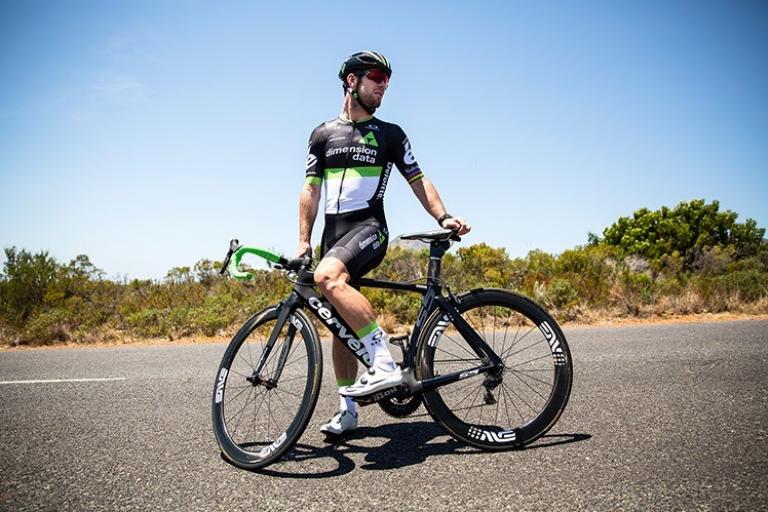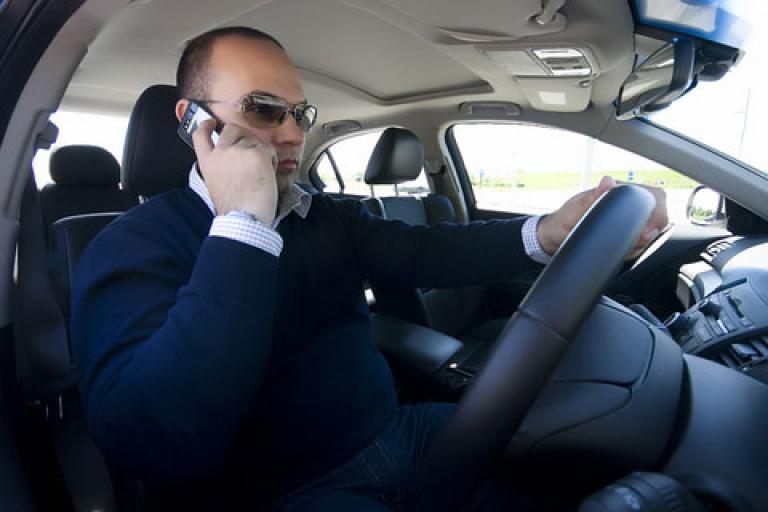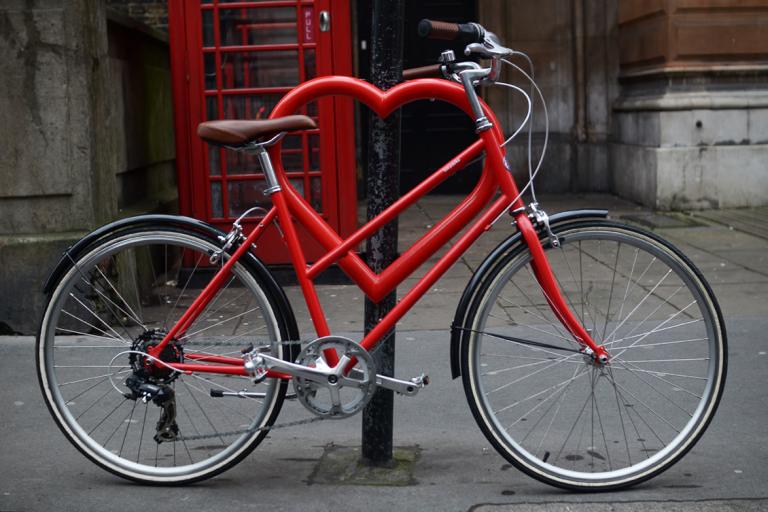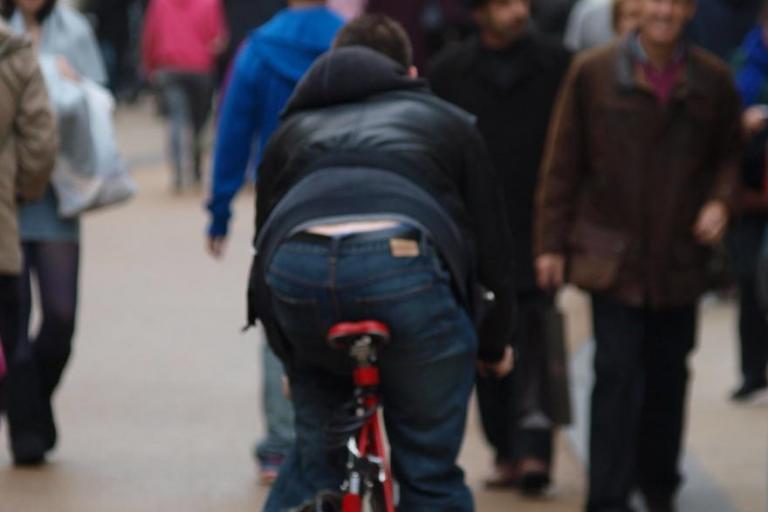- News
- Reviews
- Bikes
- Accessories
- Accessories - misc
- Computer mounts
- Bags
- Bar ends
- Bike bags & cases
- Bottle cages
- Bottles
- Cameras
- Car racks
- Child seats
- Computers
- Glasses
- GPS units
- Helmets
- Lights - front
- Lights - rear
- Lights - sets
- Locks
- Mirrors
- Mudguards
- Racks
- Pumps & CO2 inflators
- Puncture kits
- Reflectives
- Smart watches
- Stands and racks
- Trailers
- Clothing
- Components
- Bar tape & grips
- Bottom brackets
- Brake & gear cables
- Brake & STI levers
- Brake pads & spares
- Brakes
- Cassettes & freewheels
- Chains
- Chainsets & chainrings
- Derailleurs - front
- Derailleurs - rear
- Forks
- Gear levers & shifters
- Groupsets
- Handlebars & extensions
- Headsets
- Hubs
- Inner tubes
- Pedals
- Quick releases & skewers
- Saddles
- Seatposts
- Stems
- Wheels
- Tyres
- Health, fitness and nutrition
- Tools and workshop
- Miscellaneous
- Tubeless valves
- Buyers Guides
- Features
- Forum
- Recommends
- Podcast
news
Live blog: 'Makes more sense' to keep cyclists and driverless cars separate says report; Froome drops another ride on Strava, “We have to be realistic” say police about pavement cycling fines, Degenkolb spotted on 1x TT version of new Sram Red AXS + more
SUMMARY
 Cyclist and cars - image via Richard Masoner on Flickr.jpg
Cyclist and cars - image via Richard Masoner on Flickr.jpg14 February 2019, 15:27

Fizik launches “After Ride” clothing
Fizik, best known for its saddles, shorts and shoes, has launched a small range of off-the-bike clothing in its new After Ride Collection.
If you’re a big Fizik fan, you might want to dress in the new t-shirt, sweatshirt and jacket, because we can’t think of any other reason why you’d want to buy it? To be fair, the branding is understated but it’s still got the Italian company’s logo splashed all over it.
“From beautifully cut all-cotton men’s and women’s T-shirts to a full-zip soft sweatshirt and a semi-technical waterproof jacket – not forgetting the snapback cap – ‘After Ride’ is effortlessly sophisticated, all in black, with discreet branding and satisfying design touches for when you’re off the bike.”
Prices range from £20 for the t-shirt through to £170 for the waterproof jacket.
14 February 2019, 15:39

'Makes more sense' to keep cyclists and driverless cars separate says report
Forbes reports on KPMG’s Autonomous Vehicles Readiness Index – an attempt to gauge the degree to which various countries are prepared for driverless cars.
Among the more eye-catching observations is one from Stijn de Groen, an automotive expert at the firm, who says that when it comes to driverless cars the Netherlands should focus on motorways.
His argument for doing so? “We have a lot of bicycles. In urban, crowded areas it will be very difficult to start autonomous driving.”
Forbes also spoke to Charlie Simpson, co-head of KPMG’s “mobility 2030” project.
Speaking about where we’re up to with driverless technology, he said: “There will have to be some reprogramming. Right now we’re at the stage of a guy with a red flag walking in front of the [19th Century] car. When that guy went, and the cars started to go faster, humans learned not to step in front of them. We are going to have to go through that evolution.”
We’re not quite sure what to make of that comment, but Simpson did also say that KPMG’s driverless technology reports weren’t focusing on cyclists yet. “That’ll be wave two.”
14 February 2019, 11:20

Froome lays down the gauntlet for Tour de Yorkshire, and some serious speed at Tour Colombia 2.1
You’ve got some competition Yorkshire @letouryorkshire https://t.co/s636ouWIwQ
— Chris Froome (@chrisfroome) February 13, 2019
Some huge crowds at the Tour of Colombia... and Froome also gave us all the juicy details of his Stage 2 ride on Strava. A 28.4mph average over 3 hours and 24 minutes of riding, with a cadence of 91rpm... topical after this article we posted yesterday about optimal pedal cadence attracted plenty of comments and debate. Froome actually rolled in 33rd and currently sits in 11th place overall in the general classification, 3mins and 21secs back from Stage 2 winner Alvaro Hodeg of Deceuninck-QuickStep but safely nestled in with all the other GC contenders. That peloton was seriously shifting.
14 February 2019, 12:53

“You do not just lose it from one day to the next” – Cav
Mark Cavendish appears to be walking a mental tightrope at the minute, accepting that Epstein Barr Virus may have permanently compromised his ability while simultaneously raging that a sprinter doesn't just "lose it".
14 February 2019, 12:25
Sadly out of production, but a Valentine's classic nonetheless
14 February 2019, 11:51
14 February 2019, 11:40
The Red Bull Valparaíso Cerro Abajo... strong candidate for the most insane race in the world
In its 17th edition, this urban downhill race takes riders on a terrifying route through the streets of Valparaíso in Chile, and from this footage from the perspective of winner Pedro Ferreira you'd have to be pretty insane even to spectate. Ferreira celebrated his victory shortly after top 4X'er Tomas Slavic had a shocking crash, breaking ligaments and suffering a concussion according to his Instagram post below.
14 February 2019, 11:29

Fleet managers need to take distracted driving more seriously says IAM RoadSmart
With more and more technological in-vehicle distractions, employers need to revisit their driver policies says road safety charity.
14 February 2019, 11:27
Happy Valentine's Day from, er, Deceuninck–Quick-Step...
Happy Valentine's to all you cycling lovers out there!
Photo: @GettySport pic.twitter.com/dgHo9MImgT— Deceuninck-QuickStep (@deceuninck_qst) February 14, 2019
Luckily they didn't use THAT photo that landed Iljo Keisse in a spot of bother a couple of weeks ago...
14 February 2019, 12:29

Some cycling-related Valentine's Day offers...
So far we've spotted...
London Cycling Campaign Memberships come with a free Chocolate and Love gift box with their Gift Membership today, at £49 per year for an individual membership. Click here for more info.
14% off Delfast e-bikes if you sign up to their newsletter.
Half price for two tickets or more for the Wiggle New Forest Sportive.
5p cans of GT85 from Planet X, another of their 'For a Bob' deals for their newsletter subscribers. We don't know what GT85 has to do with romance, but Planet X say it's "the fragrance you love at the price you need"...
14 February 2019, 11:00
Spotted: Degenkolb on new Sram 1X version of their new Red AXS 12 speed groupset
This shot of Trek Segafredo ride John Degenkolb shows the German Classics star checking out the course of today's Tour de la Provence. More interestingly for us, though, is the drivetrain which looks like it's missing the front mech.
The large chainring definitely looks like it's part of the 1x TT crankset option for their new 12 speed Red eTap AXS groupset, and that also looks like the AXS fluid damper rear mech. The large cassette looks to be pretty big and wide-ranging, possible Sram's new 10-33 option.
Removing the front mech is more aero, apparently, but we'll be keeping an eye out for Trek riders dropping a chain...
14 February 2019, 10:47

We'll just leave this link here...
According to this Times article about a struggling filmmaker, the Instagram-friendly-day-out-with-a-few-climbing-frames-thrown-in-to-justify-the-150-quid-entry-fee-corporation-fest that is Tough Mudder is "one of the world’s most notoriously gruelling endurance and obstacle courses". We're triggered...
14 February 2019, 08:49
Liverpool’s Daniel Sturridge hasn’t entirely mastered putting on a cycle helmet
Liverpool are currently on a camp in Marbella. Sturridge arrived at training by bike.
14 February 2019, 08:28

“We have to be realistic” say police about low number of fines for cycling on the pavement
Yesterday we reported how several local newspapers this week highlighted the low numbers of cyclists being fined for riding on the pavement.
Responding to one of the stories, in the Cambridge News, a police spokesman explained: "Riding on the pavement is potentially dangerous for both the cyclist and pedestrians and police officers will take action where appropriate.
"In Peterborough, responsibility for enforcement has been transferred to the Safer Peterborough Partnership, and as a force we have to be realistic about the offences we can proactively tackle.
"We remain committed to protecting the most vulnerable people and identifying those most at risk of harm when making demand decisions."
Alex has written for more cricket publications than the rest of the road.cc team combined. Despite the apparent evidence of this picture, he doesn't especially like cake.
Latest Comments
- Capt Sisko 21 min 43 sec ago
I'm one who let my membership of BC lapse late last year and it was nowt to do with Shell....
- slc 1 hour 46 min ago
If the emergency vehicle claim is true, the Bristol Post could ask the police/fire/ambulance services to confim. ...
- mdavidford 2 hours 13 min ago
They were handed the victory on a Platea?
- chrisonabike 2 hours 52 min ago
I think the former is a fair summary. What's available guides buyers' choices BUT the common choices are reflected by the market here **....
- DogOfOB 3 hours 41 min ago
To be sure, race organizers and racers review races in detail and most often, where there have been accidents or deaths, there have been prior...
- Dadams7378 3 hours 47 min ago
I'm not sure I agree they are 'promoting' this. It is a review, so unless you're suggesting the reviewer is biased towards Fizik, then it isn't a...
- markmulder 8 hours 49 min ago
The form over function customer base is growing in cycling, and company is apparently exploiting that to the fullest.
- David9694 8 hours 57 min ago
Hours of gridlock on A2 in Canterbury after men assaulted...
- Bungle_52 8 hours 59 min ago
Looks like you may get your wish. https://www.gloucestershirelive.co.uk/news/motoring/should-older-drivers...
- David9694 9 hours 13 min ago
Man charged after lorry crashes onto railway line...

Add new comment
18 comments
To my mind the [motor] car is better seen as a monstously over-engineered mobility scooter.
given the number of annual deaths and serious injuries caused by mobility scooter users (which far exceed that of people on bikes) I think plod should be focusing more on that mode of transport with respect to the danger presented to society.
Of curse they should before they do that sort out all the nobbers in motors who park up and drive onto the 'pavement' all the time, no, just cyclists then that are 'dangerous' eh!
While the number of accidents seems to be going up, I thought the annual deaths involving mobility scooters was around 10 or a dozen, and that they mostly killed the drivers and rarely anyone else. Serious injuries also seem low in number. Do you have a link to the stats you had ? Tah.
"The most recent figures from the Department of Transport show there were 260 accidents involving mobility scooters in 2016. Sixty-one of those were classed as “serious” and 14 were fatal." - https://www.independent.co.uk/news/uk/crime/mobility-scooter-crash-man-seriously-injured-london-harold-wood-a8413391.html
Only other non news story I could find on google was
https://www.accessandmobilityprofessional.com/mobility-scooter-law-change-needed-says-coroner-yet-deaths/
but this refers more to scooter users killing themselves rather than anyone else...
Yep - that's looks similar to all the previous years stats (think 2015 was something like 28 serious, 9 fatalities - all of which were the driver - 2013 and 2011 less total, same result)
Maybe, this will keep autonomous vehicles off the road until they can actually drive around people and cyclists safely... Hmm: Big Auto.
I have a Bad Feeling about this... Think about the history of the automobile - pedestrians just walking around made it difficult for early automobiles, therefore a whole campaign started to make it the pedestrians' fault ("jaywalking").
Didn't we have a Minister telling us that considerate cycling on pavements was ok two or three years ago? Shouldn't Cambridge Police mention that?
It's a pity the police spokesperson didn't point out the actual statistics for Cambridgeshire showing it's such a minor issue. Here they are for 2007-11. I'm sure they've access to up to date figures that would be broadly similar.
From https://www.whatdotheyknow.com/request/cycle_and_motor_vehicle_accident_3
Pedestrian casualties
During the five years 2007-2011 inclusive, six pedestrians were seriously injured in collisions
with pedal cyclists in Cambridgeshire, five of these collisions occurred in Cambridge City.
During the same period 45 pedestrians were slightly injured in collisions with pedal cyclists in
Cambridgeshire, 40 of these 45 slight injuries occurred in Cambridge City.
One of the serious injuries (that happened outside of Cambridge City) occurred when a cyclist
was cycling on a pavement. Seven of the 40 (my emphasis) slight injuries that occurred in Cambridge City
involved a cyclists cycling on the pavement, as did two of the five slight injuries that occurred
elsewhere in Cambridgeshire.
Comparable figures for pedestrians injured in collisions with motor vehicles are also shown
below.
Severity | Total | Cambridge | Elsewhere
--------------------------------------------
Fatal | 34 | 2 | 32
Serious | 185 | 49 | 136
Slight | 570 | 172 | 398
Pavement as defined in the Highway Code is the pedestrian footpath and only that. "Pavement" as defined as all paved surfaces is an american definition, so applicable in the USA - not the UK.
In UK highway design the formal designations are footway, carriageway and cycle-route.
Nope, it's been descriptive of general paved surfaces in English for a long time *. It may have changed it's primary interpretation over time but it's still retained the broader meaning as well.
Cheers for the clarification.
* In particular, since before the English-speaking US was a thing.
OK, thanks for that
From the same force that decided not to prosecute this: https://www.bbc.co.uk/news/amp/uk-england-cambridgeshire-40134629
You'd think that a police spokesperson would use the correct definitions. IIRC "pavement" includes the bit the cars are on, the bit the pedestrians are on, and (obviously) the bit the bikes are on. Confusion arises when local papers start frothing at the mouth about cyclists on "pavements" without checking the legal status of said pavement, and whether cyclists are actually allowed to ride there.
(Anecdote: "Bloody cyclists on the pavement!" mutters the young lady to her friend as I ride slowly past; I stop, point at the blue roundel on a nearby lamp post, ask if they know what it means... They didn't).
I have a similar anecdote, of an old dear telling me to get off the pavement when she was stood on the painted bike sign of the shared use path. I asked if she wanted to apologise for swearing at me and my daughter, but she declined.
Odd one, pavement is any paved surface whereas 'the' pavement seems to be taken specifically as the raised, paved surface beside the road. A footpath may be paved, in part, but not a pavement (or rather, not 'the' pavement) and may be by the side of a 'road'. The bit house-house / building-building is the highway, that's the one that includes (side) pavements, footpaths, road surfaces and the like. Or something, i'll look later maybe.
@brooksby - had this on the Portway heading North up past the Shirehampton Golf Course - path there is seriously wide but robustly framed gent was on the inside of it, two small terriers skittering, about sniffing the floor and so on between him and the outside - said 'excuse me' a couple of times, waited, eventually went around the outside of one of the dogs who then jumped up and barked. Mouthful from the gent, I point at shared use sign, he says what's wrong with the road. I encounter dozens of dog walkers going through Blaise Castle when commuting, and never get that sort of grief - some people are just like that.
Do you mean that section up by the lookout? That's about thirty feet wide??
And I've got to say: "what's wrong with the road"??? Has he even looked at the Portway?!? Or how people drive on it...
Has he even looked at the Portway?!? Or how people drive on it...
Nearly, juuust before that on the way up - probably only about 25 foot wide there....
@brooksby - had this on the Portway heading North up past the Shirehampton Golf Course - path there is seriously wide but robustly framed gent was on the inside of it, two small terriers skittering, about sniffing the floor and so on between him and the outside - said 'excuse me' a couple of times, waited, eventually went around the outside of one of the dogs who then jumped up and barked. Mouthful from the gent, I point at shared use sign, he says what's wrong with the road. I encounter dozens of dog walkers going through Blaise Castle when commuting, and never get that sort of grief - some people are just like that.
[/quote]
Just remind them of the guidance in the highway code
Rule 56
Dogs. Do not let a dog out on the road on its own. Keep it on a short lead when walking on the pavement, road or path shared with cyclists or horse riders.